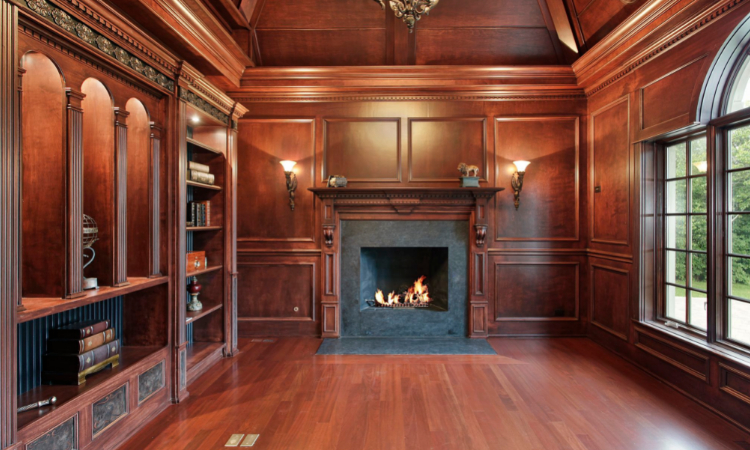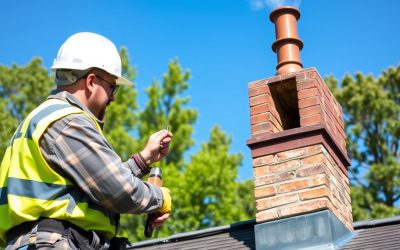The gas fireplace typically remains clean than a wood fireplace but it doesn’t mean they are not required to clean. Even if you show negligence in cleaning a gas fireplace it can be more dangerous than normal fireplaces.
Do gas fireplaces need a chimney sweep? Yes, gas fireplaces need a chimney sweep. A chimney sweep is necessary to clean the flue and remove soot and other debris from the fireplace and chimney. Accumulated soot can cause many problems, including clogging the flue and preventing proper ventilation, which can lead to dangerous carbon monoxide buildup.
This blog post cover how often to clean, the cost, and some other related queries to the Gas Fireplaces Need A Chimney Sweep.
How Often Should You Sweep Your Gas Fireplace Chimney?
A gas fireplace chimney should be swept at least once a year. In some cases, however, you may need to sweep your fireplace more often if you use it frequently. If soot or debris builds up in your fireplace or on the walls of your chimney, it’s time for a sweep.
The gas fireplace is better than a wood fireplace
Even though gas fireplaces don’t produce the same soot and debris that wood-burning fireplaces do, it’s still important to sweep your chimney regularly. Soot can build up on the walls of your chimney, which can lead to a chimney fire. In addition, leaves and other debris can clog your chimney, preventing dangerous gases from being properly vented outside.
Let it done by the professionals
Anyone can sweep their chimney if they have the proper equipment and training. However, we recommend letting the professionals handle it. A certified chimney sweep will have the knowledge and experience necessary to safely and effectively clean your gas fireplace chimney. In addition, they will have the proper tools to do the job right.
The cost
The cost of having a gas fireplace chimney swept will vary depending on factors such as the size of your chimney and the frequency with which it needs to be cleaned. However, most sweeps will cost between $75 and $200.
How does the Gas Fireplaces Chimney Sweep Process Work?

Here is how this process works:
- Gas fireplace chimney sweeps begin by inspecting the fireplace and identifying any potential problems.
- Once the fireplace has been cleaned of soot and debris, the chimney sweep will use a brush to remove it.
- In addition to vacuuming away debris, the chimney sweep will also clean the chimney.
- To ensure that the fireplace is clean and safe, the chimney sweep will inspect it again.
The gas fireplace chimney sweep process is relatively simple but it’s important to have your fireplace serviced by a professional regularly. If you need help finding a certified chimney sweep in your area, search on google.
How to Install a Gas Fireplace without a Chimney

1. Find a perfect place to start
Select the location for your gas fireplace. It’s important to choose a spot that is large enough to accommodate the size of your fireplace unit and that has access to an existing gas line.
2. Cut the hole
Prepare the wall for the fireplace unit by cutting a hole in it. A slight gap between this hole and the unit itself is required to ensure a snug fit.
3. Connect the gas line
Run the gas line from the existing gas line to the fireplace unit. Ensure that all connections are secure and that there are no leaks.
4. Install the mantel
Install the mantel or surround for your fireplace. The finished look will make it look more attractive and help keep any heat from damaging the wall behind it.
5. Give it a test
Test your fireplace by igniting it according to the instructions in your owner’s manual. Once it’s lit, enjoy your new cozy spot.
People also ask
How to do gas fireplace cleaning?
Gas fireplace cleaning is a pretty simple process. Just follow these steps:
- Turn off the fireplace and allow it to cool down.
- Vacuum the ashes and soot from inside the fireplace using a vacuum cleaner with a brush attachment.
- Remove any remaining ashes or soot from the fireplace by wiping it down with a damp cloth to remove any remaining ashes or soot.
- Inspect the flue pipe for blockages, and clean it if necessary.
- Re-start the gas fireplace and check for any leaks.
Is gas fireplace cleaning worth it?
Based on how often and how much dirt accumulates in your fireplace, you will be able to answer this question. If you only use your fireplace a few times a year and it doesn’t get too dirty, then cleaning it may not be worth the hassle. However, if you use your fireplace more often or if it gets very dirty, then gas fireplace cleaning may be worth it to keep the unit working properly and avoid a buildup of soot and other debris.
Can a gas fireplace cause a chimney fire?
Yes, a gas fireplace can cause a chimney fire. The intense heat from the gas fireplace can cause the creosote in your chimney to ignite, leading to a dangerous and potentially destructive fire. You can help prevent chimney fires by maintaining your chimney properly. Clean your chimney by a qualified professional, and never use an open flame to remove creosote – this could easily result in a chimney fire.
Final Verdict
Despite not using wood, gas fireplaces still require routine chimney cleaning to prevent soot buildup and dangerous gases from entering your home. A professional should sweep your gas fireplace chimney at least once a year, but if you use it often, you may need to schedule more than one sweep.
On average a gas fireplace chimney sweep usually costs between $75 and $200, depending on factors such as size and how repeatedly you clean it. In a nutshell, you must focus on cleaning your fireplace regardless of whether it’s a gas or wood fireplace. It does not only give you a healthy environment but it also extends the fireplace and chimney’s lifespan.
If you are interested in knowing how long a chimney sweep will take click here





0 Comments